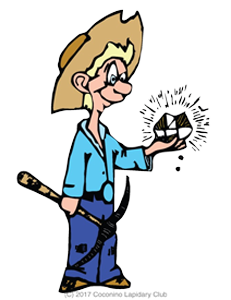This is the first of two Blogs on native gold. In the first I introduce the mineral and its properties, including a gallery of specimens exhibiting the crystal forms of gold and the effects of deposition conditions on forms of gold. Having just found out about it, I’ll also describe the deposition of gold by bacteria in alluvial deposits placers. In the following blog, I’ll present examples of ancient gold jewelry and art works from various locations around the world which demonstrate the innovative artisanship of early goldsmiths.
Among the native elements, Gold [Ref 1] because of its beautiful golden color, its rarity, and its aura of wealth and power, is a favorite among collectors and museum-goers [Ref 2] [Ref 3] [Ref 4]. Specimens of electrum, the lighter colored of alloy of gold, containing silver, [Ref 2] are also favorites. Specimens of both native gold and electrum from around the world occur in a variety of aesthetic and interesting forms ranging from single crystals and their groupings (Figs 5-9), twinned crystals (Figures 10-14), intricate dendrites, which are fern-like single crystals (Figures 14-15), and in spectacular sheet forms (Figure 16).
Some Properties of Gold [Ref 1]
With a Mohs hardness in the range 2.5-3 gold is malleable which makes it easy to work into decorative forms by a goldsmiths. It also doesn’t oxidize, which facilitates melting it for casting, and soldering. In thick form, gold exhibits a rich yellow color due to its high reflectance of light in the yellow-red spectral range. In sufficiently thin form, as gold leaf, it transmits blue and green light. Its high specific gravity measures in the range 15-19.3 grams/(cubic centimeter), which allows efficient recovery of gold in placer deposits such as gold panning.
Basic Gold Crystal Forms [Ref 1]
Gold, (and Electrum), crystallize in the isometric crystal system in it’s typical forms, shown in Figures 1-2. Gold forms twinned crystals about an octahedral plane as shown inFigures 3-5 [Ref 5 ]. Dendritic crystals result from repeated Spinel-twinning in a branched structure with branches at 60 degrees relative to each other. A native gold specimen referred to as wire gold, is not a wire in the sense of the native silver wire, (See the Native Silver Blog), but is an extended single group of multiple Spinel-Twinned crystals as shown in the specimens of Figures 12-13. Gold deposited in fractures with the host mineral, when exposed, possesses leaf-like forms as in Figure 15.





Gallery of Native Gold Specimens
In many gold specimens the crystals do not display the perfection of form typical of some other minerals such as pyrite, but are skeletal with depressions, or [Ref 6], are also referred to as being hoppered [Ref 7]. Gold crystals can also exhibit interesting, complex twinned and dendritic forms. These departures from ideal forms stem from conditions of rapid deposition in absence of thermodynamic equilibrium [Ref 8]. Gold specimens featuring octahedral, cubic, wire, dendritic. and leaf forms, the latter, which in many instances is formed in interstices in fractured quartz [Ref 9].
[metaslider id=1914]
Deposition of Gold By Bacteria
In searching the web, I found recent studies which, surprisingly to me, demonstrated the deposition of particulate gold by the action of specialized bacteria in alluvial deposits [Ref 10] [Ref 11]. In the studies, the presence of toxic gold complexes was shown to initiate the formation of a population of bacteria which excretes enzymes that catalyze the formation of nanoparticles of gold, [Ref 12]. Aggregation of nanoparticles of silver and gold have been shown to participate in crystallization of these metals, which allow growth of gold on a nugget [Ref 13]. Bacteria resident in a biofilm [Ref 12], on the surface of a gold nugget could function as a source of gold which forms a gold coat on the crystal with sustained activity of the bacteria. A scanning electron microscope image of the bacteria in the biofilm on a gold nugget is shown in Figure16. The deposition process takes place for years to decades in order to accrue on a gold grain, suggesting that if the process can be speeded up, bacterial deposition could improve ore-processing [Ref 14].

References
Ref 1. https://www.mindat.org/min-1720.html
Ref 2. https://www.amnh.org/exhibitions/gold/
Ref 3. https://en.wikipedia.org/wiki/Gold_Museum,_Bogota
Ref 4. https://adrianhepworth.photoshelter.com/image/I0000f0UBlFQgu3I
Ref 5. https://www.mineral-forum.com/message-board/viewtopic.php?t=3044
Ref 6. https://www.mindat.org/glossary/skeletal_crystal
Ref 7.https://en.wikipedia.org/wiki/Hopper_crystal
Ref 8. https://en.wikipedia.org/wiki/Crystal_growth
Ref 9. https://pubs.geoscienceworld.org/gsa/geology/article-abstract/16/6/551/190624
Ref 10. https://phys.org/news/2009-10-bacterium-formation-gold.html
Ref 11. http://www.mdpi.com/2075-163X/3/4/367/htm
Ref 12. https://en.wikipedia.org/wiki/Cupriavidus_metallidurans
Ref 13. http://iopscience.iop.org/article/10.1088/0957-4484/17/23/021/meta
Ref 14. https://phys.org/news/2017-04-role-microorganisms-industrial-gold.html
